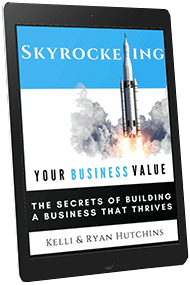
Business Valuation Glossary
The following glossary of concepts covers some important key terms a business owner should understand when receiving a business valuation. For questions, schedule a free consultation with Peak Business Valuation, business appraiser.
Comps or Comparable Company Analysis: a method that compares similar companies to the company being valued. Valuation multiples such as share price, market capitalization, revenue, EBITDA, and earnings are used.
Discount Rate: the percentage rate used to calculate the present value of a future cash flow.
Discounted Cash Flow Method: a method within the income approach where the present value of future expected net cash flows is calculated using a discount rate.
Enterprise Value: represents the total market value of the company. It is often determined through EBITDA or Revenue multiples. Enterprise Value is equal to the fair market value of the business plus debt minus the cash balance as of the valuation date.
Economic Benefit: any benefit that can be quantified in terms of money. For example, net income, revenue, or profit.
Equity: also called total shareholders’ equity or net worth. Equals the total assets minus total liabilities.
Fair Market Value: the price at which a willing and able buyer and a willing and able seller would transact. Considering it is an open and unrestricted market and neither is under compulsion to buy or sell. Also, both parties need to have reasonable knowledge of relevant facts.
Going Concern Value: the value of a business that expects to continue operating in the future. Typically going-concern value will be greater than the liquidation value as it includes goodwill. When a company sells, the price is usually based on its going-concern value.
Goodwill: the difference between the purchase price of the business and the fair market value of the identified tangible and intangible assets. It may include things such as brand recognition, reputation, customer loyalty, trade secrets/recipes, unique processes, etc.
Intrinsic Value: the perceived or calculated value of an asset, investment, or company. It is ordinarily calculated by discounting the future income of the asset to obtain the present value.
Liquidation Value: the net amount that is realized if the business is dissolved and the assets sold.
Market Capitalization: the conversion of a single period of economic benefits into value.
Market Multiples: are ratios comparing one financial metric (i.e. Share price) to another financial metric (i.e. Earnings per Share). Multiples are financial measurement tools used to compare different companies.
- EBITDA Multiple: earnings before interest, taxes, depreciation, and amortization. Most commonly calculated using enterprise value (EV) divided by EBITDA. An approximate estimate of cash flow or operating profit.
- Revenue Multiple: is a ratio used to measure a company’s value based on its net sales or gross revenue. Typically calculated by dividing Enterprise value (EV) by sales or revenue.
- Sellers Discretionary Earnings Multiple: is a cash-flow measure of business earnings. It is calculated by adding net income + taxes + interest expense + depreciation expense + amortization expense + owner’s compensation + non-cash charges.
Net Book Value: the value of an asset as it appears on a business’s balance sheet. It is calculated by subtracting accumulated depreciation from the original cost of the asset. In the case of a business, it is calculated as the difference between total assets and total liabilities as they appear on the balance sheet.
Normalized Earnings: are adjustments made to financial statements to eliminate any non-recurring or unusual business expenses. Normalized Earnings should reflect the ongoing performance of the company and set the foundation for developing expectations about the company’s future performance and cash flows.
Premise of Value: the set of assumptions made when valuing a company about the most likely transaction scenarios. The two premises of value are going concern and liquidation.
Standard of Value: the identification of the type of value used in a specific engagement. For example; fair market value, investment value, and intrinsic value.
Valuation Approach: a general way of determining the value of a business, business ownership interest, security, or intangible asset using one or more valuation methods.
Peak Business Valuation, business appraiser, is happy to answer any questions you have about business valuation. Schedule a free consultation to get started! We look forward to hearing from you.
Schedule Your Free Consultation Today!
